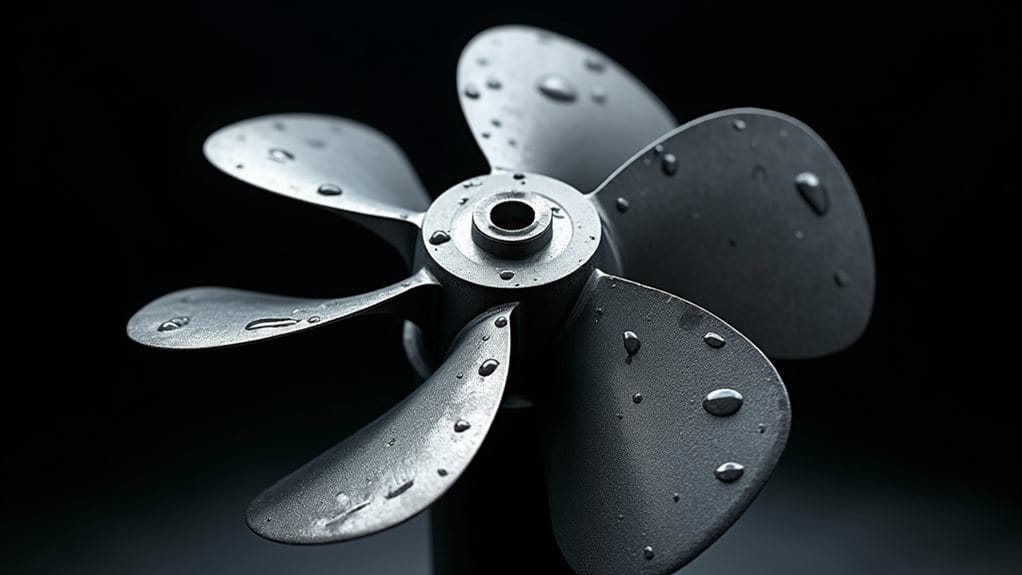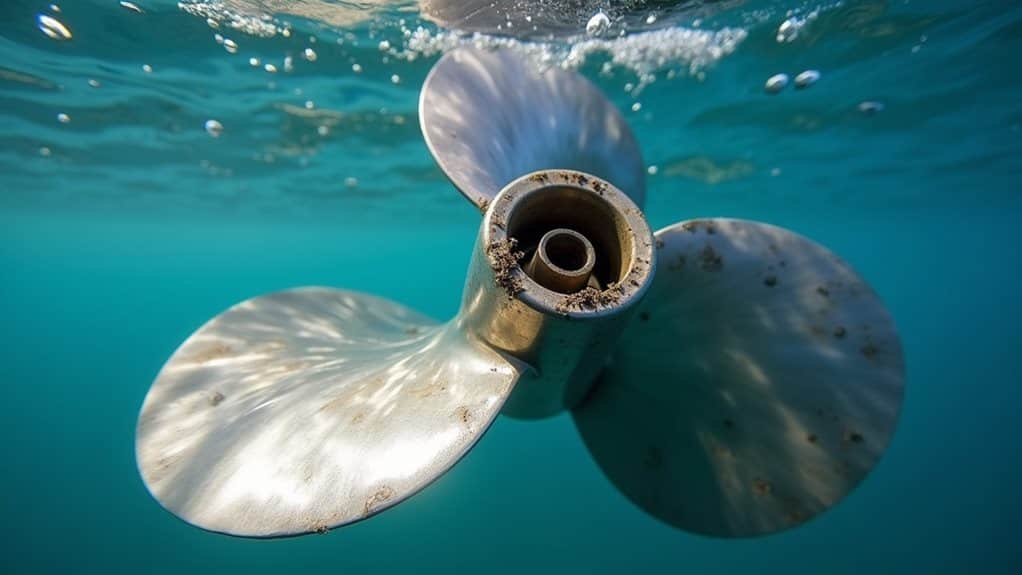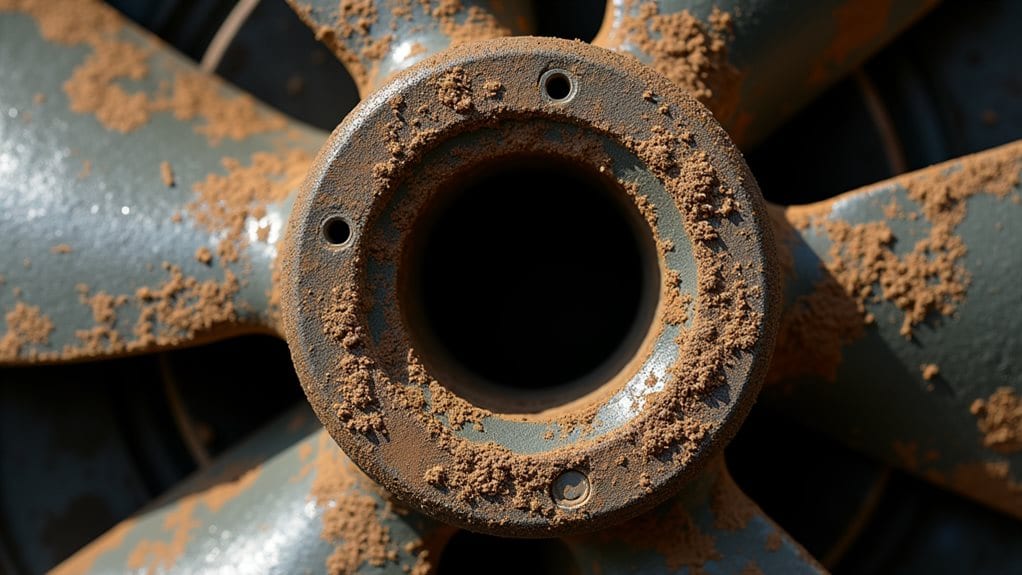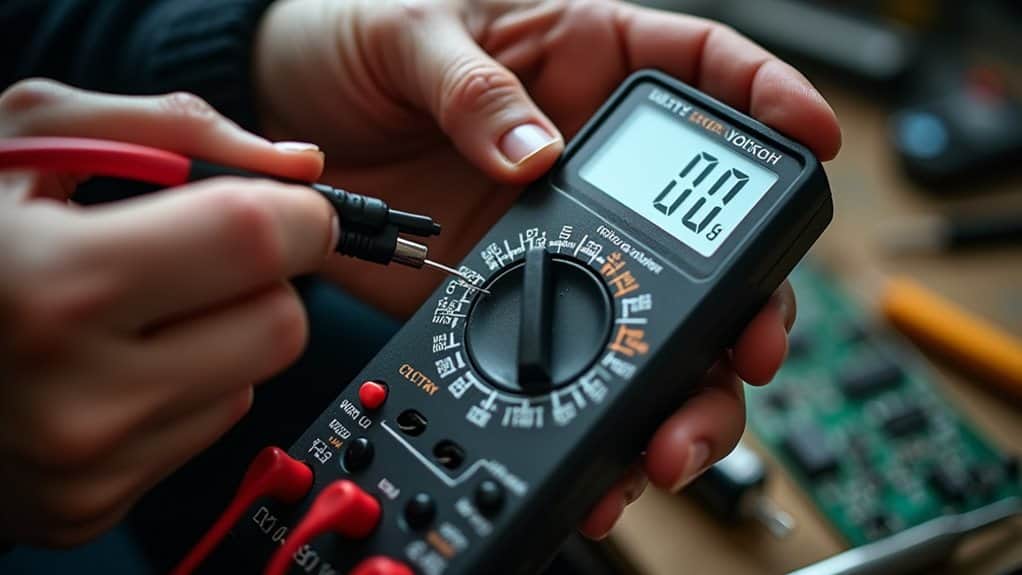A boat impeller is an essential component that pumps water through your engine’s cooling system to prevent overheating. You’ll find it within the raw water pump, where its flexible rubber blades create suction to draw water through cooling passages. Most impellers are made from durable materials like neoprene or plastic, designed to withstand harsh marine conditions. While regular maintenance is important, understanding how your impeller works can help you spot potential issues before they become serious problems.
TLDR
- An impeller is a crucial component in a boat’s engine that pumps water through the cooling system to prevent overheating.
- Made from flexible rubber or neoprene, impellers use rotating blades to create suction and move water through the engine.
- Impellers are essential for marine propulsion systems and typically found in raw water pumps that circulate cooling water.
- Regular inspection and replacement every 100-300 engine hours ensures optimal performance and prevents engine damage.
- Rising engine temperatures, leaks around pump housing, and decreased performance are common signs of impeller failure.
Understanding the Basic Components of Boat Impellers

Boat impellers, crucial components in marine propulsion and pump systems, serve as the beating heart of various watercraft operations.
You’ll find these rotating components made from durable materials like rubber, neoprene, or plastic, designed to withstand harsh marine conditions. Regular maintenance is essential since impellers harden over time, affecting their performance. Understanding the boater safety education programs is also vital to ensure safe operation while utilizing these components.
They work by converting rotational energy into hydrodynamic energy, creating the flow and pressure needed for essential functions like engine cooling and water circulation.
How Impellers Keep Your Engine Running Cool
When your boat’s engine is running at full throttle, it’s the impeller that serves as the unsung hero of your cooling system, tirelessly pumping water to prevent overheating. The impeller’s flexible rubber blades create suction that draws water through your engine’s cooling passages, absorbing heat along the way. Experts recommend replacing the impeller biannually to maintain optimal cooling performance. Regular maintenance, including spark plug replacement, ensures your engine operates efficiently. Whether you’re running a raw water system or one with a heat exchanger, your impeller guarantees ideal operating temperatures.
Different Types of Boat Impellers and Their Uses

Marine impellers come in several distinct types, each engineered for specific applications and water conditions you’ll encounter on your boat.
You’ll find centrifugal pump impellers in open, semi-open, and closed designs, while raw water pump impellers are typically made from flexible rubber compounds.
For your boat’s cooling system, you’ll most commonly use Jabsco or Johnson-style impellers, which are available from various manufacturers. Understanding the performance modifications that can enhance your boat’s speed is also essential for optimal operation.
Essential Maintenance for Optimal Impeller Performance
Maintaining your boat’s impeller system ranks among the most important responsibilities of boat ownership.
You’ll need to inspect it every 100-300 engine hours or annually, especially after periods of inactivity.
Don’t forget to use the right tools like channel lock pliers and lubricants during maintenance.
Always check for wear, brittleness, or scoring, and remember to avoid running the engine dry. Additionally, regular checks can help ensure optimal performance and prevent issues similar to those seen in fish preservation and preparation.
Warning Signs of Impeller Wear and Failure

Understanding the warning signs of impeller wear and failure can mean the difference between a smooth day on the water and a costly repair bill.
Watch for rising engine temperatures, especially at lower speeds, and don’t ignore leaks around the pump housing.
You’ll also want to monitor your engine’s performance, as gradual decline often indicates wear.
If you notice cracks or tears in the impeller blades, replace them immediately.
Final Note
Your boat’s impeller plays an essential role in keeping your engine running smoothly, and you’ll want to make regular inspections part of your maintenance routine. Check for signs of wear every 200 hours of operation or annually, whichever comes first. By understanding your impeller’s function and maintaining it properly, you’ll prevent overheating issues and extend your engine’s life, saving both time and money in the long run.


